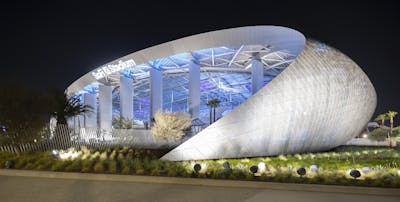
The original full article by Hrushikesh Sandhe, Head of Infrastructure for Walter P Moore’s Pune office, appeared in the June 2023 issue of ACP Magazine.
Overview
Integrating water management practices with flood risk considerations to ensure the resilience of site designs and infrastructure in the face of climate change and increasing rainfall intensities is critical. Instead of the traditional approach of simply draining rainwater into rivers, we advocate for maximizing on-site infiltration capacity to mitigate flood risks. Low Impact Development (LID) techniques, such as rainwater harvesting and nature-based solutions, are effective strategies for managing stormwater runoff, protecting water quality, and reducing on-site and downstream flooding. By adopting a holistic watershed-based approach and prioritizing infiltration where groundwater levels allow, sites can better manage rainfall runoff, enhance resilience, and minimize environmental impact.
Water management for reuse or infiltration is one of the sustainable aspects of design. However, if water management is evaluated in isolation of flood risk, then the design for the site or any facility will not be resilient. With climate change impacts and increased rainfall intensities, water management solutions must be evaluated from a flood risk management perspective.
The traditional approach of collecting rainwater through a drainage network and discharging it to a river is not a sustainable and effective solution. It is often useful to maximize the infiltration capacity of a site at the source of flooding. Thus, practices such as Low Impact Development (LID) have frequently been suggested as adaptation strategies to local climate change. Recently, there have been a lot of high-intensity, small-duration events that surcharge drainage systems and sometimes flood streams and rivers. The potential effects of LID can be useful in mitigating or reducing the effects of such flash flood events. The site discharge should be controlled to pre-development quantities as possible. Additionally, instead of looking at solutions only at the site level, a holistic watershed-based approach will be more effective.
Collecting rainwater using the drainage system and discharging it to public drainage or open channels has been the traditional stormwater management approach for airport facilities. However, due to increases in airport facilities, passenger footfall, and climate change, the operators have understood the value of rainwater harvesting. Airports have significant impervious areas, and the runoff collected can be diverted to locations that can help retain, infiltrate, or store water, which will help reduce dependency on the public water system.
Low Impact Development is an approach commonly used in the United States for site-level control or infiltration of rainfall runoff. The primary benefit of this technique is to filter first flush sediments before entering the public drainage system and protect the water quality of rivers from pollution. The additional benefit is the detention of low but more frequent rain events, which helps prevent flooding on-site and off-site.
LID techniques are primarily nature-based solutions and, hence, can help achieve site-level landscaping objectives. Typically, LID approaches can work effectively for small drainage areas around one acre. Hence, if this technique discussion is involved in the initial stages of planning, the appropriate locations for solutions and overflow can be identified.
At locations where the groundwater table is typically low, priority should be given to collecting runoff from the site and infiltrating into the ground. As part of the design process, overflow can be designed for major events (five years + return interval) to pass without surcharging on the site. The distributed infiltration-based LID can be effective at reducing discharges for higher-frequency events, despite urban landscapes and high-intensity rainfall.


